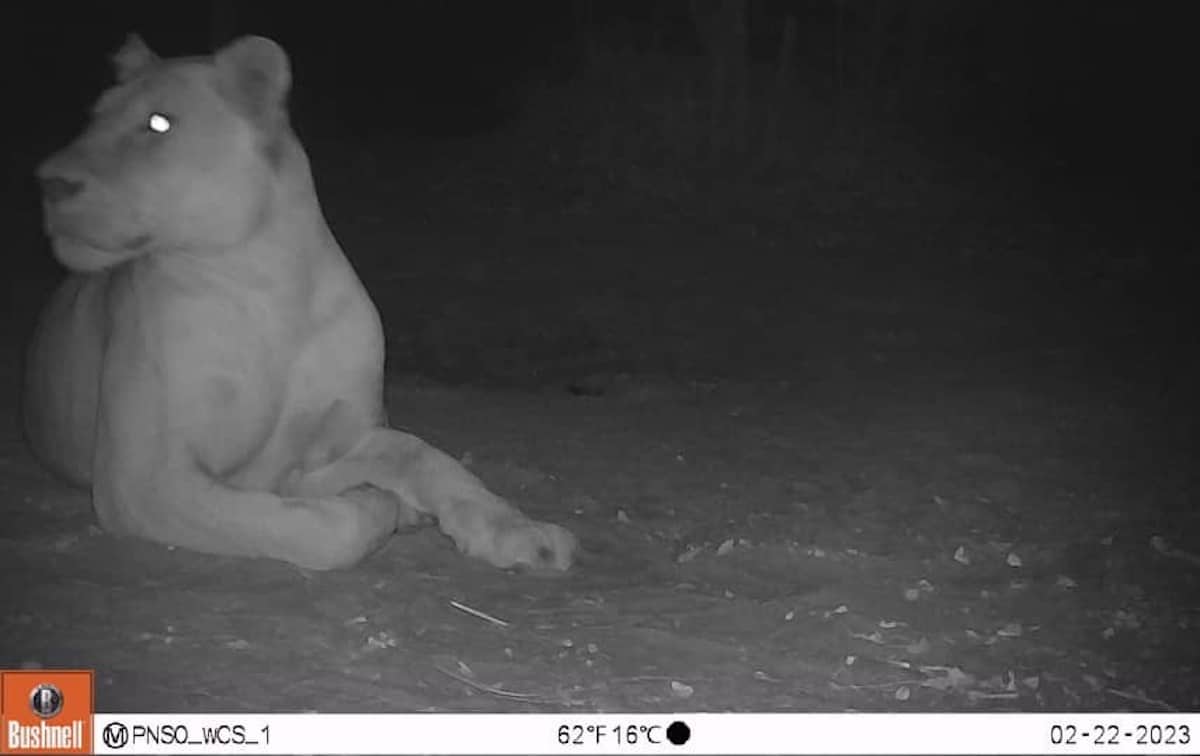Products You May Like
The lion believed to be extinct but spotted by camera in Sena Oura National Park, Chad. Wildlife Conservation Society (WCS) / Government of Chad
 Why you can trust us
Why you can trust us
Founded in 2005 as an Ohio-based environmental newspaper, EcoWatch is a digital platform dedicated to publishing quality, science-based content on environmental issues, causes, and solutions.
In a sign of hope for lions, conservationists from the Wildlife Conservation Society (WCS) and the Government of Chad were overjoyed when a remote camera captured the majestic image of a healthy female lion in Chad’s Sena Oura National Park, where not a single lion had been spotted in almost 20 years.
Just a century ago, as many as 200,000 lions roamed the African savanna. Today, with around 23,000 African lions estimated to be living in the wild, the big cats are classified as “Vulnerable” on the International Union for Conservation of Nature (IUCN) Red List of Threatened Species.
The conservation team described the female lion as, “A beautiful lioness, in her prime and clearly in great health,” a press release from WCS said.
More From EcoWatch
The image of the female lion was captured in February, but was just recently released, reported BBC News.
“The photo shows a prime, very healthy adult lioness, around five years old,” Dr. Luke Hunter, WCS Big Cat Programme executive director, told the BBC. “I am sure she is not alone.”
Lions are officially extinct in Sena Oura National Park, according to the IUCN. The park is part of the Bouba N’djida-Sena Oura Landscape, which sits along the border of Chad and Cameroon.
“This is hugely encouraging because prime females are the foundation of any lion population, and they are not big wanderers: they inhabit areas that have prey and are safe to raise their cubs in,” Hunter said, according to the BBC.
Poaching was a big problem in the region more than 10 years ago, but dedication to conservation by the governments of both countries has led to wildlife populations starting to bounce back under improved protections of the national parks, the press release said.
The lion population in Cameroon’s Bouba N’djida National Park has been increasing, and the lions there seem to be repopulating parts of their former range, which includes adjacent Sena Oura.
Wildlife surveys have been conducted by WCS conservationists in support of the region’s park guards, which include the use of camera traps like the one that caught the image of the female lion in Sena Oura.
There are only two recognized species of lion in the world: the African lion and the Asiatic lion. Not nearly as many Asiatic lions as African lions — fewer than 500 — remain living in the wild, and they can only be found in the western coastal state of Gujarat, India.
West and Central African lion populations are fragmented and have gone down approximately 66 percent since the early 1990s. These lions are a genetically distinct subspecies from the lion populations in East and Southern Africa, and they are considered Critically Endangered regionally.
Hunter said fewer than 1,000 northern lions still inhabit the western and central parts of the continent, BBC News reported.
These are “especially endangered and precious,” Hunter added.
Subscribe to get exclusive updates in our daily newsletter!
By signing up, you agree to the Terms of Use and Privacy Policy & to receive electronic communications from EcoWatch Media Group, which may include marketing promotions, advertisements and sponsored content.
